
4×4 Winter Traveling Basics: Driving Techniques, Accessories & General Preparation
It’s that time of year again. Temperatures are getting cold in the mountains, and the snow is starting to fall.
With traveling and exploring in the snow comes a number of things to consider and prepare for before heading out on your icy adventure.
Plan your trip ahead of time
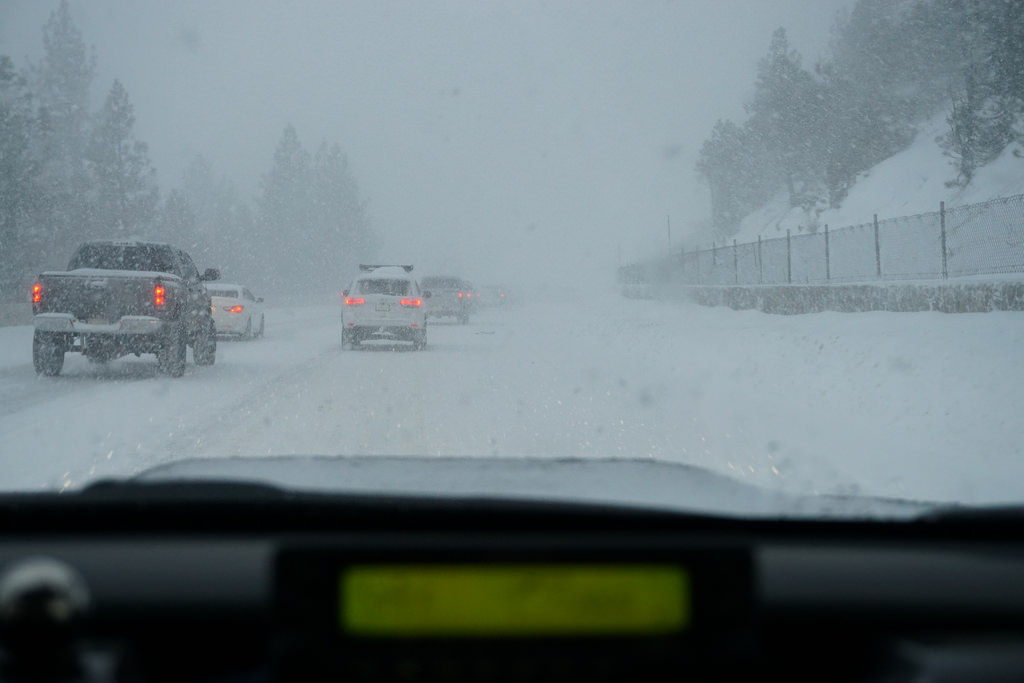
Check the weather and highway conditions
It goes without saying that when traveling in winter conditions, knowing the weather forecast and highway conditions is the first part of preparing for a trip.
If weather conditions will be risky and highways closed, it might be better to just stay home. Otherwise, research your route and the weather to plan for the forecasted conditions.
Notify others of your plans
Just like the buddy system, have plans set in place to let a friend or relative know the routes you will be traveling and when you will be either arriving at your destination or coming back. By letting someone know where you will be, you will increase your chances of being found if your vehicle slides off the roadway or breaks down.
Prepare your vehicle for winter travel
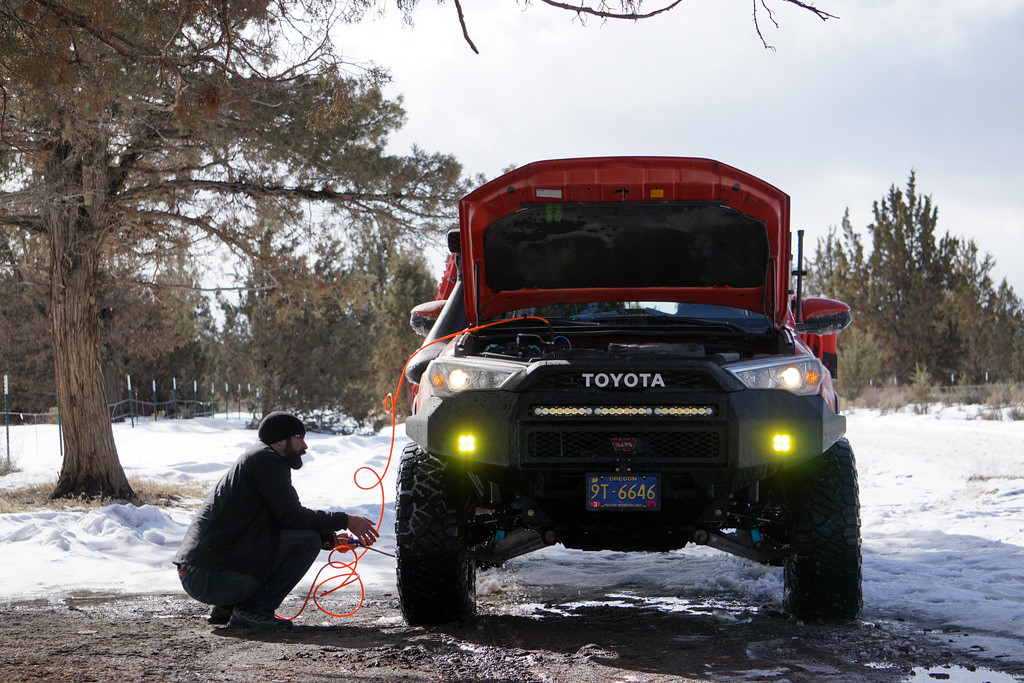
Have a good set of tires
Tires are the first and most important line of defense against accidents in the snow. Bald, aging, or non-snow/winter-rated tires will do you no good when traveling in snow/winter conditions.
Furthermore, having 4wd will not make up for the lack of overall traction. If you plan on visiting or exploring in the snow, invest in good mud and snow (M+S) rated all-terrain tires such as the Cooper Discoverer AT3 LT or XLT.
They are not dedicated winter tires, however, their block pattern and extra siping help increase traction on snow and ice.
If you commonly travel in the mountains during the winter months, or live in areas with frequent winter storms, installing a set of severe-rated snow/winter tires such as the Cooper Discoverer AT3 4S or AT3W will ensure maximum traction in winter conditions.
They are designed with Snow Groove Technology, and Micro Gauge™ Zigzag Sipes to allow for maximum traction in winter conditions.
Trail Tip: Cooper Tires® suggestions for winter tire care
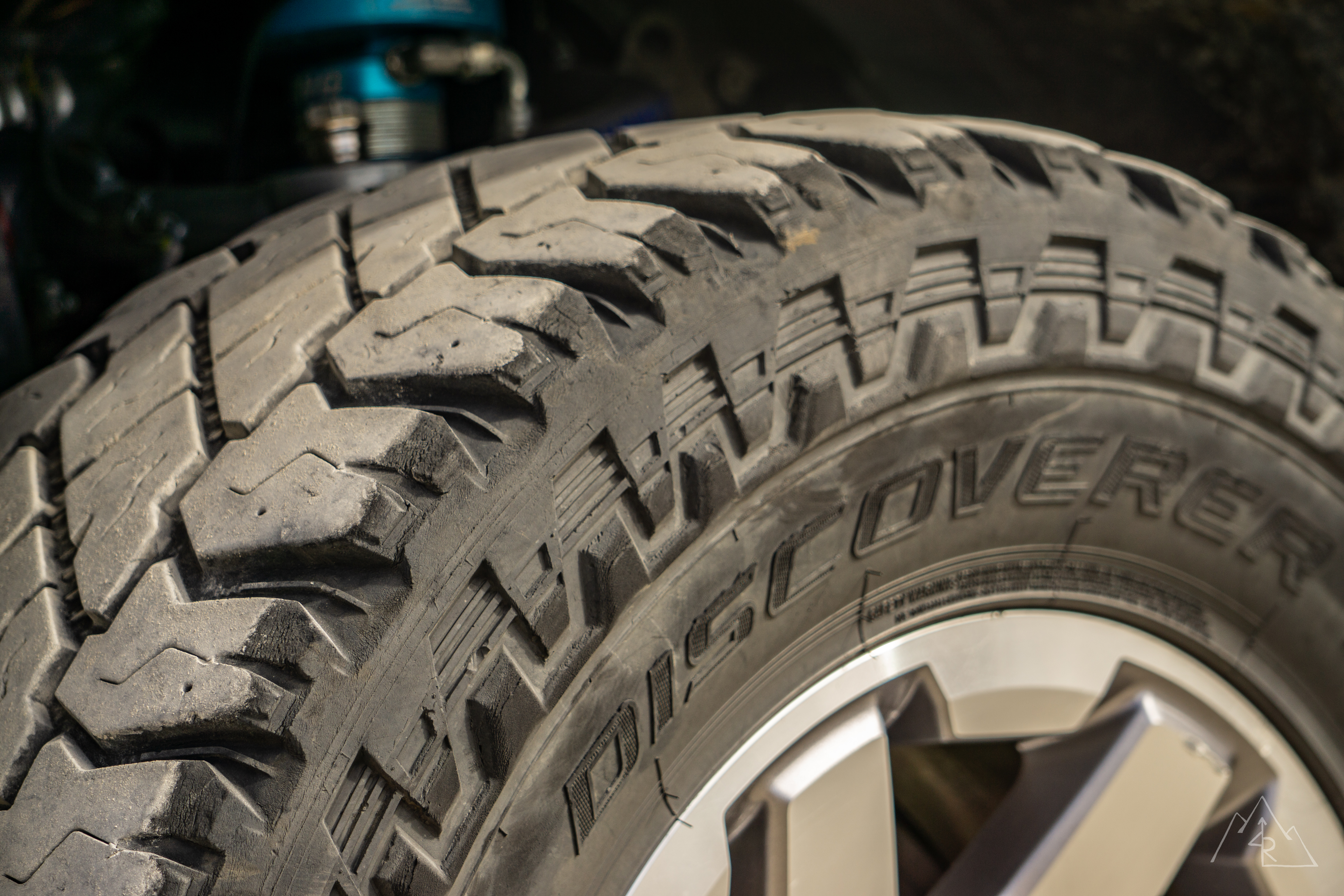
- Tire pressure decreases by about one pound per square inch for every 10-degree drop in outside air temperature, so it is vital that drivers check the air pressure regularly as winter weather approaches.
- When purchasing winter tires, replace all four tires. Due to the different grip capabilities of different types of tire—summer, all-season and winter tires—you may not get all the handling and traction benefits if all tires are not replaced.
- For winter weather driving, a general rule is the more tread depth, the better. A tire’s minimum tread depth should be more than 2/32 of an inch deep all around the tire.
- Drivers can check tread depth by using a U.S. penny. Insert the edge of the coin into the tread with Lincoln going in headfirst. If the top of Lincoln’s head is covered by tread that means there is at least a minimum acceptable amount of tread; if the top of his head is visible at any location on the tire, the tire is worn out and it’s time to replace it. For winter driving in adverse conditions, your tires should exceed the minimum tread depth standard.
- While examining the tread, also look for signs of uneven wear or damage such as cuts, cracks, splits, punctures and bulges. These conditions shorten the life of tires and, if not corrected, further tire damage, tire failure or air loss may occur.
Replace wiper blades and top-off washer fluids

Often with traveling in winter conditions, there will be either rain or snow falling, or spray generated by other cars on the road that will decrease windshield visibility.
Having a good set of wiper blades or new refills will ensure an even wipe across the windshield, and winter rated washer fluid will allow you to wash away debris on the windshield.
Keep in mind, winter rated wiper fluid will stay a liquid much longer than a standard washer fluid or water will as it is formulated for below freezing temperatures.
Before traveling to the snow, drain the washer fluid tank of any non-winter fluid and refill with 100% winter rated fluid to ensure no freezing.
Always stay above 1/2 tank of fuel
It’s always better to have too much fuel than not enough. No time is that more important than when traveling in winter conditions.
Travel is often slower between gas stations and highways can be shut down, leading to excessive idling. This means that you will likely burn more fuel than normal.
Also, in the event that your vehicle becomes stuck, you will have more fuel in the tank to keep you warm while you wait for help.
By staying at 1/2 tank or above you might spend more time at the gas station, but you will be more than prepared for any situations that might unfold on the road.
Adjust your Driving Techniques
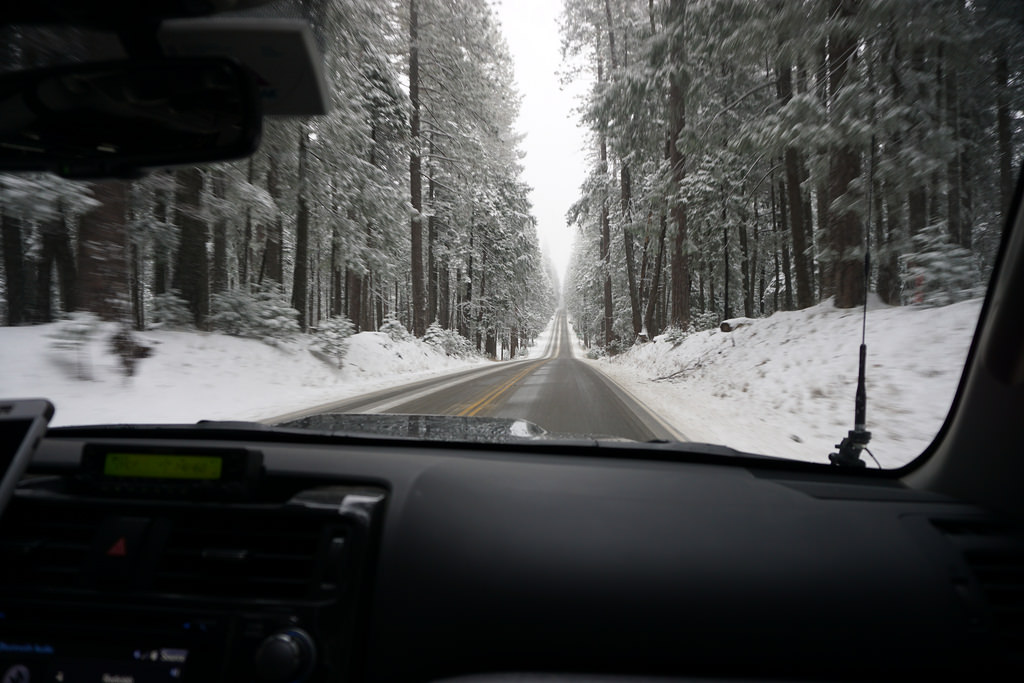
Slow down
Most accidents in snowy and icy conditions happen because of excessive speed given the conditions.
Just because you have 4wd and snow rated tires doesn’t mean you can defy physics. Physics always wins.
Turning reactions, braking distances, and lateral grip are all compromised in snowy conditions. Reducing overall speed helps to allow for more room to make decisions and execute maneuvers.
And as a bonus, you’ll be moving at a slower speed if all control is lost and an accident is inevitable. Remember: 4wd won’t make you stop any faster than a 2wd vehicle.
Keep rolling
If possible, keep the vehicle moving and avoid full stops, especially on hills. More traction is required to get a vehicle moving after it has come to a complete stop, and many vehicles become stuck after stopping. Just try to keep moving.
Reduce input
For all controls (braking, accelerating, turning, etc), reduce the severity of input. Accelerate slower, turn smoothly and brake lightly.
All of these suggestions will reduce the risk of losing traction on any of the tires and will keep your vehicle pointed in the right direction.
Understand how your 4wd system works
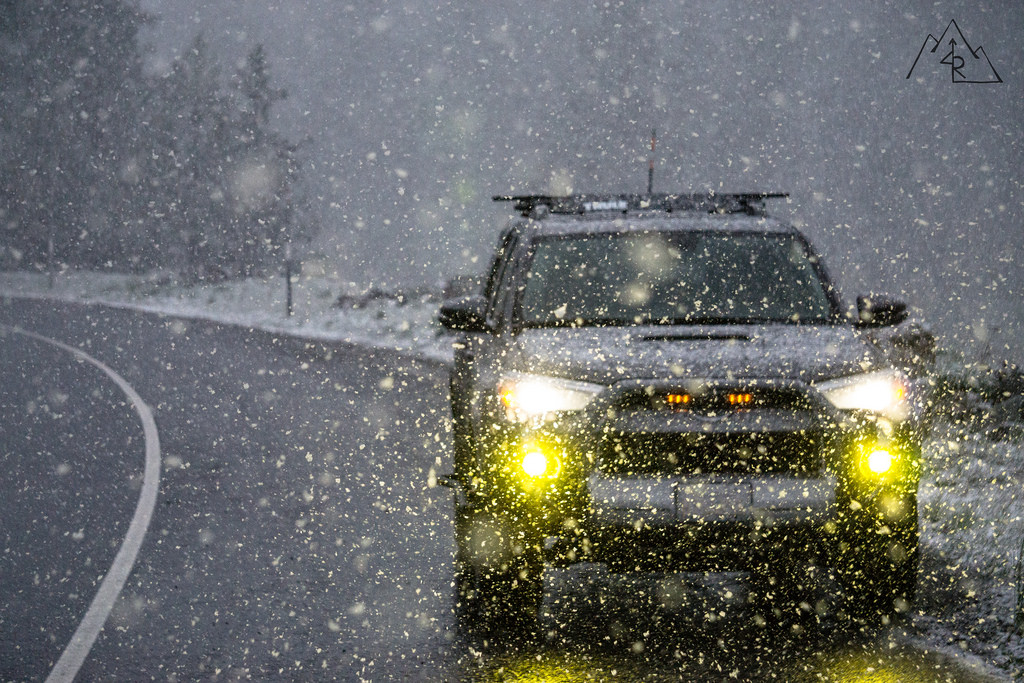
Another common issue with those that travel into the mountains during the winter is not knowing how their 4wd system works.
Here are some basics to help:
Part-time 4wd systems; TRD, SR5
- 4HI can be engaged either by the lever or knob on-the-fly up to 50mph (lever) / 62mph (knob), and can reasonably be driven faster than that without any issues.
Full-time 4wd systems; Limited
- H4L can be engaged in snowy conditions to help equalize power between the front and rear axles by locking the center differential. This can be engaged at any speed.
Both systems
- 4wd/H4L will function well as long as there is some form of precipitation on the road. Driving on roads that vary from snow covered to wet won’t hurt your 4wd, but as soon as it dries up its best to switch back to 2wd/H4H.
- Do not engage 4LO/L4L unless you are in a slow situation where maximum traction is needed and the traction aids are required (A-TRAC, MTS, locker, etc).
- 4wd won’t make you an invincible force. It will drastically help with performance and safety over a 2wd vehicle, but it won’t make up for excessive speed or fast maneuvers. Use with caution, common sense and always remember that 4wd does not help with stopping any more than a 2wd vehicle.
Carry the essentials for snow travel
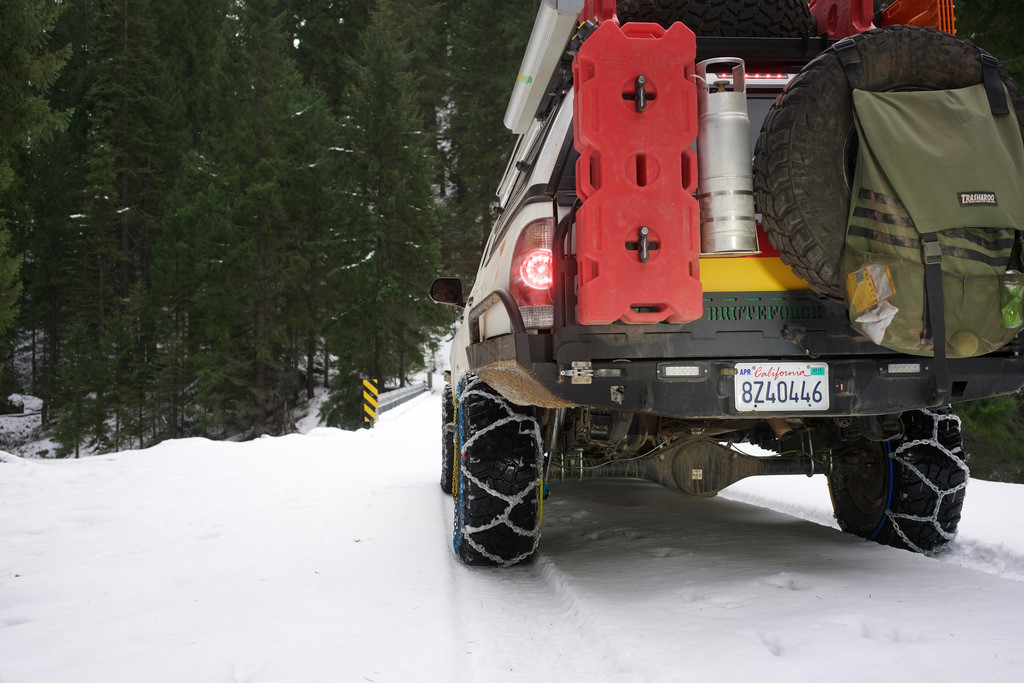
When you’re heading to the mountains, you need to prepare for both what will happen and what might happen.
Conditions and situations can change very quickly. Bringing the essentials along with you can help you get to your destination and possibly save your life.
What I bring on a snow trip
- Snow shovel. A dedicated snow shovel will move a lot of snow much faster than a standard shovel, meaning more work done for the effort.
- Tow/snatch strap. This is the easiest way to get unstuck, or help someone else. Don’t forget soft shackles and a hitch pin to attach it at both ends.
- Traction boards (MAXTRAX or TREDS) make for a light-weight self-recovery option when traversing deeper snow drifts, but typically won’t help on icy or heavily packed snow.
- A snow rated spare tire. In the event that you need to change out a tire due to a flat, having a snow rated tire that matches the others is very beneficial because you will still have equal traction across your 4 tires.
- Chains. In California, they are required to be in your vehicle when under chain control even with 4wd. They are also the best way to gain traction in bad conditions, and very handy to have. I carry RUD Grip 4×4 chains for all 4 tires when traveling into the snow.
- Extra water and food. Always carry a few extra gallons of water and some high-density snacks. If you get stuck for a few hours either because you are stuck yourself or the highway closes, you can have the essentials at the ready.
- Blankets and extra clothes. Keeping warm can become crucial if you are forced to shut off the vehicle. A warm blanket and some extra layers will make it easier to retain body heat in colder temperatures. A wool blanket works well if you have space, but an emergency blanket is easy to pack under a seat if space is cramped.
If you get stuck, or slide off the roadway
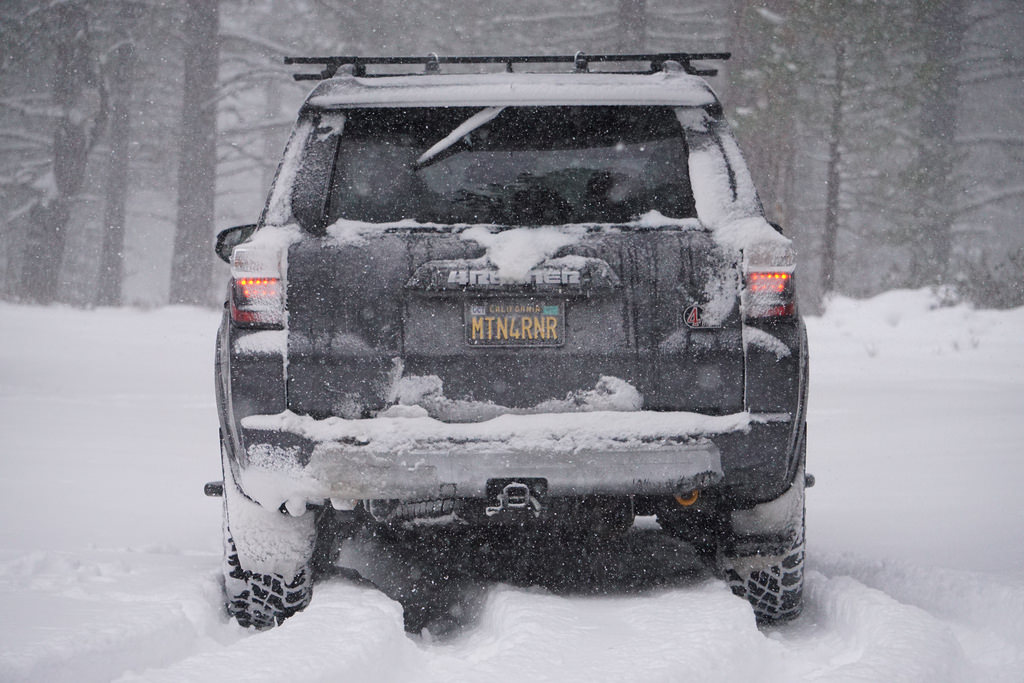
- Stay with the vehicle. Leaving the vehicle increases your risk of getting lost, stuck or freezing if you are far from the road. In stormy conditions, stay in the vehicle and refrain from getting out as blizzard conditions can be disorienting and you can lose your vehicle easily.
- Clear the exhaust pipe of debris and snow. This will allow exhaust fumes to flow freely, and reduce the risk of carbon monoxide build-up inside the vehicle while it’s running.
- Run the engine just enough to keep warm. Once the cabin has reached a tolerable temperature, shut off the engine to conserve fuel. You never know how long you will be stuck and our 4Runners will burn approximately 0.5 – 0.75 gallons/hour at idle.
- Keep an interior light on. They draw little power and make it easier for the vehicle to be spotted in dark conditions.
- Tie a brightly colored object somewhere high up on the vehicle. This will help others spot the vehicle in the snow.
Enjoy winter in the mountains, and stay safe on the roads.

Great post! Thanks for the advice! I’m curious, you recommend getting chains for all 4 tires, but I know Toyota recommends only chains for the rear tires, due to clearance issues up front? Just wondering what your experience is, no issues with the front tires? Ever tried just 2 on the rear? Thanks for your help!
Hey Josh // You’re right, the manual states only the rear tires. Two main reasons for this: clearance at the upper control arm and body mount, and if you were to have a failure on the front, you can potentially damage your brake line which would render your brakes useless. Now, I carry all 4 when I am heading into deeper snow areas, mainly because if I am in a real bind and need the extra traction (or increased ability to steer), I likely won’t be going fast enough to cause damage if there was a failure, and I will know to keep my wheels from going full lock where I may contact something. They have that warning in the manual more for someone going down the highway at speed with chains versus someone travelling slower or snow wheeling. I hope that helps. // Max
Great post! I just wish I would have seen it earlier! I headed up to Yosemite this weekend (12/01), and could have used a lot of this info. Particularly the part about it being REQUIRED for CA residents to have chains in snowy conditions, regardless of having 4WD and M+S rated tires. Had to fork up $200 to get past the park ranger and get into the valley! But it sure was worth it to have fun and slide around those snow filled roads and take some awesome pictures!
Ah bummer! Sorry you had to fork out the $$$ for the weekend. Yep, that little tidbit is something that many with 4wd vehicles don’t know until it bites them. Just be glad that you didn’t get stuck on the interstate. CHP is not friendly about 4wd vehicles that get stuck and don’t have chains in chain control areas. Fine + Tow + Chains > Chains. Glad you had a good weekend regardless!